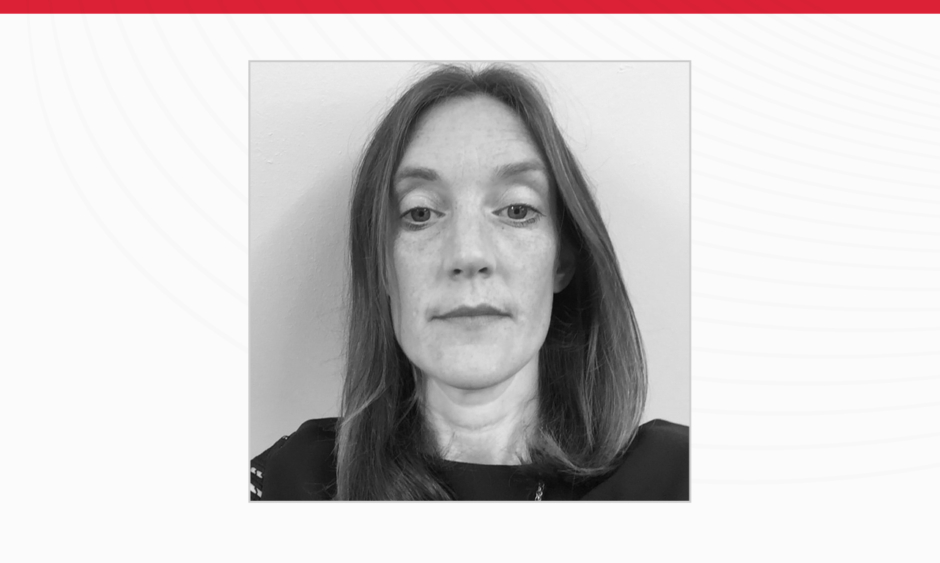Alison McNeilly | Principle Investigator, Division of Systems Medicine, University of Dundee School of Medicine, UK
What initially interested you about diabetes that led you to pursue a career specialising in this therapeutic area?
I have always been interested in physiology and how the body works, and, during my PhD, I had the opportunity to work with models of glucose dysregulation. Many of us take the ability to control our blood glucose within a ‘healthy euglycaemic’ range for granted. It is only when things go wrong that we appreciate how complex this process is. My recent work has focused on Type 1 diabetes mellitus (T1DM), where individuals cannot produce their own insulin and rely on insulin replacement therapy. Although insulin therapy has revolutionised Type 1 and long duration Type 2 diabetes mellitus (T2DM) management, it is not without complications, with low blood glucose (hypoglycaemia) being a major barrier to glycaemic control. When most people think of diabetes, they think of the impact of high blood glucose (hyperglycaemia) on the body. However, individuals on insulin therapy often experience periods of very low blood glucose and fluctuations between high and low glucose can be very damaging to many organs such as the brain, heart, and vascular system. In my research, I am focusing on what causes this damage and how we can treat this.
You are a widely published researcher on the topic of diabetes. Do you think there are any common misconceptions held by both the general public and the research community about diabetes and diabetes treatment?
Yes, I think most people view diabetes as a single disease, but there are many different forms of diabetes, the most well-known being T1DM and T2DM. Historically, T1DM was a disease of the young, whereas T2DM was more common in middle age; however, this is not the case. For example, Theresa May, former Prime Minister of the UK, was diagnosed with T1DM in her 50s and, conversely, children are being diagnosed with T2DM, predominantly due to the link with obesity. Likewise, treatment differs between T1DM and T2DM. T2DM can be managed with changes in lifestyle and insulin sensitising drugs, and even reversed by weight loss. In contrast, there is no cure for T1DM, and individuals must rely on exogenous insulin therapy.
As a researcher specialising in the impact of hypoglycaemia on cognitive and vascular function, where can we expect to see the focus of your publications lie over the coming years?
Up until now, I have been focused on the impact of recurrent hypoglycaemia on cognition and peripheral vascular function, but now I want to combine the two fields. The brain is one of the most highly perfused organs in the body and relies on glucose carried in the bloodstream to function. Disruption of this vascular system supplying the brain can have catastrophic effects; for example, when someone has a stroke, the blood supply to the brain is cut off and part of the brain dies. I am investigating whether the cognitive complications that we see in those experiencing hypoglycaemia occur to changes in blood supply to particular parts of the brain or damage to the vessels within the brain. I am also keen to explore the inflammatory profile of the brain and have some interesting studies looking at the link between neuroinflammation and cognitive function.
Where do you perceive the gaps in the literature for diabetes and hypoglycaemia to lie, and what areas do you believe merit greater attention?
T1DM research is much less well researched than T2DM, primarily because only around 5–10% of the population diagnosed with diabetes have Type 1. However, hypoglycaemia is common in those with long-duration T2DM reliant on insulin therapy, and we see hypoglycaemia with sulfonylureas, especially in the elderly. The data generated from continuous glucose monitors will be highly informative and suggest that individuals are experiencing far more hypoglycaemic episodes than they thought. The long–term implications of repeated exposure to hypoglycaemia are of particular interest to our group.
What has been your proudest or most memorable moment as a member of the Hypo-RESOLVE consortium?
Hypo-RSEOLVE has been an amazing opportunity. Meeting and working with world experts in the field of hypoglycaemia research has given me a greater appreciation of the impact of hypoglycaemia on everyday life for those living with T1DM. Collaboration between research groups from all around Europe and the bi-directional communication between basic researchers and clinicians has enabled us to perform experiments that would not be possible working alone.
How do you believe the contemporary climate of the COVID-19 pandemic has impacted the field of diabetes research and treatment?
The COVID-19 pandemic has significantly impacted my work as our labs are based in a hospital and we could not come to work for nearly 4 months. All our teaching was held online, and it was hard not being with work colleagues that you usually see on a day-to-day basis. I am relatively early on in my career, so having nearly 1.5 years where I could not start any long-term experiments for fear of another lockdown has been difficult. Grant funding for work that is non-COVID-19 related is also scarce as many charitable organisations do not have the funds available. It means more people are applying for fewer grants, so it is not a great time to be in science.
Your proposed concept, ‘habituation to hypoglycaemia’, has been explored as a potential treatment through dishabituation in rodent and clinical trials. Can you tell us about the current stage of research into this concept and whether this might be something we can expect to see used clinically?
This is an exciting area of research, and we have several studies on the go to look at the potential mechanisms that may contribute to the phenomenon of dishabituation. Although we demonstrated improvements in the counter-regulatory response to hypoglycaemia in rodents and the clinic and, crucially, improvements in symptom awareness in those with impaired awareness of hypoglycaemia, we do not know how long this effect will last. Furthermore, we would anticipate that you would habituate to the dishabituating stimulus if exposed to it repeatedly. We are currently performing rodent studies to look at both of these aspects, and our clinical fellow has some exciting news that we hope to publish shortly, so watch this space!
What are the most important shifts in focus that you have seen in the time you have spent within the field of diabetes research?
One of the first diabetes conferences I went to was almost entirely focused on the β-cell. I spoke in a session called ‘Outside the Islet’ as very few of us presented data on other aspects of the disease. There are now more groups looking at the complications of diabetes such as cardiovascular disease, cognition, and renal damage. Even within the Hypo-RESOLVE consortium, eight or nine work packages focus on different aspects of the disease, such as how hypoglycaemia impacts quality of life and the use of smart technology to improve glycaemic control. There seems to be a more holistic approach to treatment, with individuals being more involved in their care packages as it is clear that what works for one person may not work for another.
Are there any innovations on the horizon of diabetes research that you think are particularly exciting or noteworthy?
I think everyone will be focusing on generating an artificial pancreas using stem cell therapy as a potential ‘cure’ for diabetes. The closed-loop systems where the insulin pump and continuous glucose monitor communicate are becoming more common, and it will be interesting to follow these individuals and see if this system improves glycaemic control. If we can improve glycaemic control, the long-term complications associated with hypoglycaemia will hopefully be minimised. Finally, glucagon administration for recovery from severe hypoglycaemia is an area that is often overlooked. Many see glucagon as a last resort or find it challenging to administer, so the ability to inhale glucagon via the nasal passage would be a game-changer and would hopefully limit the complications associated with severe hypoglycaemia.
What advice would you have for an individual keen to pursue a career similar to your own?
I still love my job and would not want to do anything else. I have been lucky in that I found a great mentor who has always looked out for me. I’ve also had the opportunity to work with many amazing people and travel to many different countries. However, it is not an easy career, and you have to accept frequent knockbacks as paper and grant rejection. If you can cope with this, however, it makes the positives even better!







